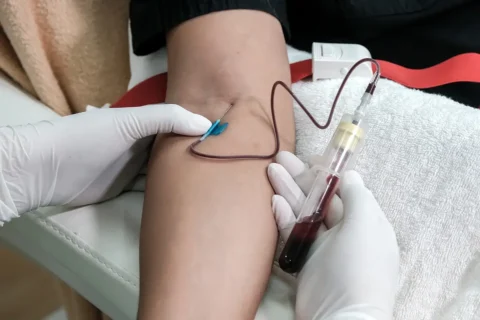Examining Tirzepatide’s Novel Dual Mechanism of Action
When it comes to managing type 2 diabetes, patients and providers alike are eager to learn about promising new treatment options. Two medications that have been making waves are tirzepatide and metformin.
Metformin is the tried and true stalwart that has been a first-line diabetes treatment for years. It’s affordable as the sands of time and has a reputation milder than a lamb when it comes to side effects.
Tirzepatide, on the other hand, is the spunky new kid on the block. This weekly injection is causing quite the buzz with its ability to deliver a one-two punch of improved blood sugar and weight loss. However, it comes with a heftier price tag.
With two medications that seem different as night and day, patients are curious how they truly compare. Like detecting the difference between a wolf and a husky, we need to carefully examine the key characteristics of each.
This article will spotlight the main similarities and differences between tirzepatide and metformin to shed some light on the matter.
Mechanism of Action
Tirzepatide and metformin have quite distinct mechanisms of action.
Tirzepatide
This novel medication works by activating both GLP-1 and GIP receptors simultaneously.
By stimulating these key receptors, tirzepatide produces a range of effects:
- Increases insulin secretion from the pancreas
- Reduces appetite
- Ultimately lowers blood glucose significantly
Metformin
Metformin takes a more subtle approach to lowering blood sugar. It gently decreases the liver’s glucose production.
- Improves cell sensitivity to insulin.
- Slows absorption of carbohydrates from food.
- Its overall blood sugar lowering effect is modest but meaningful.
In summary, tirzepatide aggressively reduces blood glucose through dual receptor agonism, while metformin takes a nuanced, multi-pathway approach though small effects. Their mechanisms differ considerably.
Efficacy

When it comes to lowering A1C and impacting weight, these two medications are again quite different.
Tirzepatide
This newcomer can substantially lower A1C, around 2% on average based on clinical trials. This reduction is significantly greater than most other diabetes medications.
Tirzepatide also causes considerable weight loss, about 10-15% of body weight over 6 months. This is a major perk for many patients.
Metformin
As the first-line diabetes medication, metformin modestly lowers A1C, typically around 1-2%. Metformin is considered weight neutral – it does not cause weight loss or gain for most patients.
Tirzepatide is a powerhouse when it comes to improving blood sugar and promoting weight loss. Metformin, while reliable at lowering A1C, does not provide the same magnitude of effects. The efficacy of these two medications is quite different, with tirzepatide being the clear winner for many patients.
Side Effects
When it comes to potential side effects, there are some important distinctions between these medications.
Tirzepatide, being a newer medication, does come with some potential side effects to be aware of. The most common issues are gastrointestinal in nature – nausea, vomiting, diarrhea, and constipation have been reported.
These tend to be mild to moderate and improve over time, but can be bothersome initially. Tirzepatide has also been associated with increased heart rate in some patients. Due to its mechanism of action, it can theoretically increase the risk of pancreatitis, though this is rare.
Metformin on the other hand is generally well-tolerated, especially when taken with food and ramped up slowly.
Like tirzepatide, metformin can cause some GI upset like diarrhea, nausea or abdominal pain. The major safety concern is lactic acidosis, though this is quite rare and generally only occurs in older patients with impaired kidney function.
Compared to most diabetes medications, metformin is very low risk in terms of side effects for most patients.
Tirzepatide has a moderately high rate of GI side effects, while metformin is usually well-tolerated with minimal issues for most patients. When weighing the risks and benefits, metformin likely has a slight edge regarding side effect profile. However, tirzepatide’s side effects are temporary and need to be weighed against the benefits it provides.
Indications
When it comes to approved uses, there is some overlap but also a key difference between these medications:
Both tirzepatide and metformin are indicated for the treatment of type 2 diabetes. They have robust evidence supporting their ability to lower blood glucose in patients with type 2 diabetes.
However, tirzepatide has an additional FDA-approved indication that metformin does not have – chronic weight management. Based on strong clinical trial data, tirzepatide may be prescribed specifically for weight loss in patients who are overweight or obese.
Metformin has not been approved for weight loss and does not have significant evidence supporting its use as a weight loss agent.
In summary, both medications can play a role in managing type 2 diabetes, but tirzepatide has the added benefit of also being indicated for weight reduction in patients who need it.
This gives tirzepatide an edge over metformin when weight loss is a major priority. However, metformin remains the first-line drug for overall diabetes management.
FAQs: Tirzepatide vs Metformin
What is tirzepatide?
Tirzepatide is a once-weekly GLP-1 receptor agonist developed by Eli Lilly and Company for the treatment of type 2 diabetes mellitus. It is an incretin hormone that helps improve glycemic control.
How does tirzepatide work?
Tirzepatide mimics the effects of naturally occurring incretin hormones GLP-1 and GIP. It acts on receptors in the pancreas to stimulate insulin release and suppress glucagon secretion in a glucose-dependent manner. This helps lower blood glucose levels in patients with type 2 diabetes.
What are the benefits of tirzepatide over other medications?
Clinical trials like SURPASS-2 have shown greater A1C reductions and weight loss with tirzepatide compared to other antihyperglycemic medications. In the SURPASS-2 study, tirzepatide led to A1C reductions up to 2.34% and weight loss up to 15.6 kg from baseline at 40 weeks.
How is tirzepatide administered?
Tirzepatide is given as a once-weekly subcutaneous injection, starting at 2.5 mg and increasing to 5 mg, 7.5 mg, 10 mg, 12.5 mg or 15 mg over time based on tolerability and glycemic response.
What are the potential side effects of tirzepatide?
Common adverse events include gastrointestinal effects like nausea, vomiting, diarrhea and decreased appetite. Tirzepatide may also increase heart rate. Hypoglycemia can occur if used with insulin or sulfonylureas.
Is tirzepatide recommended for cardiovascular risk reduction?
Outcomes data on major clinical and cardiovascular outcomes is still pending. Tirzepatide shows potential benefit based on improvements in weight and A1C, but further research is needed to confirm cardiovascular risk reduction.
Who should not take tirzepatide?
Tirzepatide is not recommended in patients with a personal or family history of medullary thyroid carcinoma or multiple endocrine neoplasia syndrome type 2. It is also not indicated for use in type 1 diabetes mellitus.






